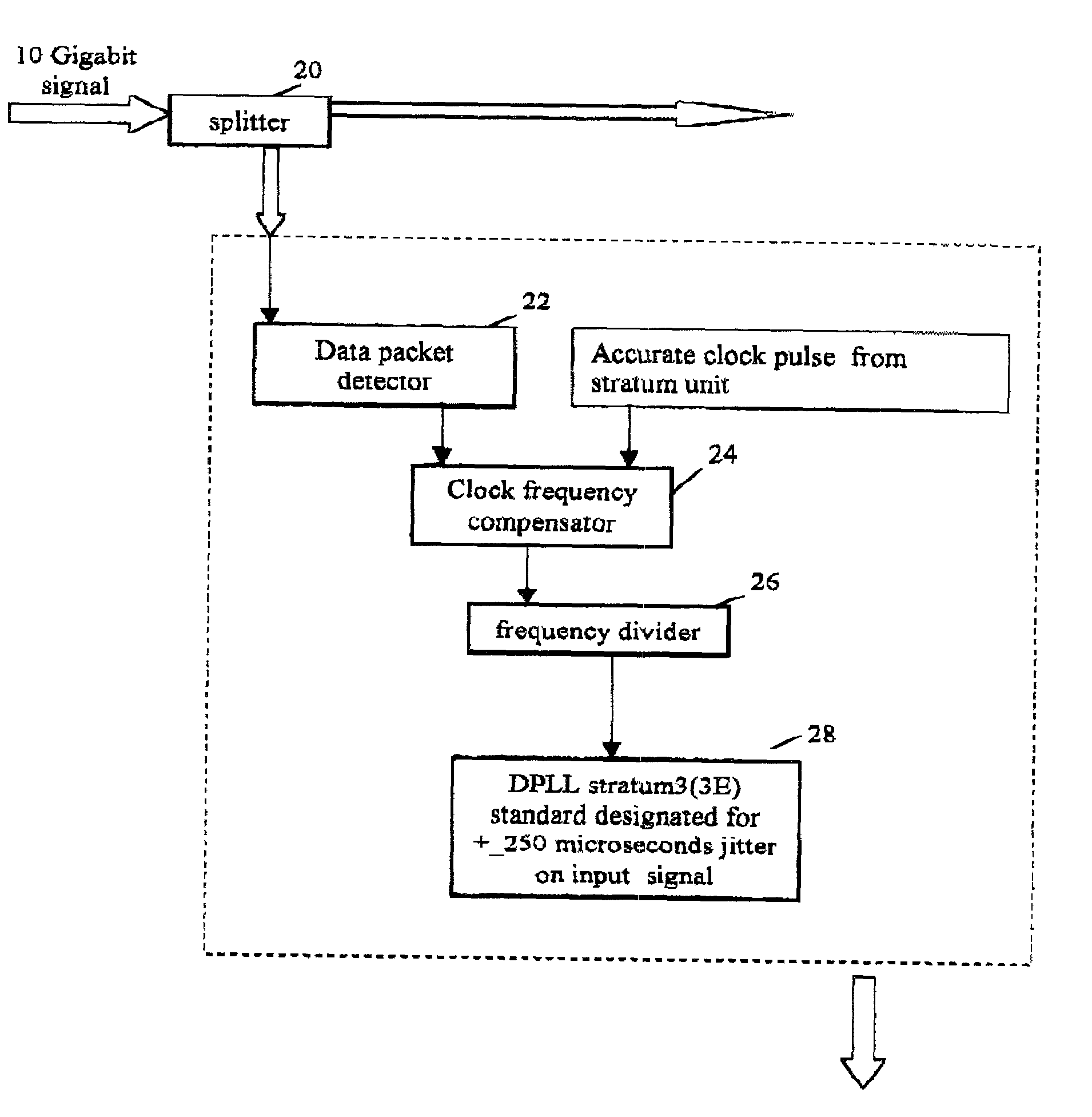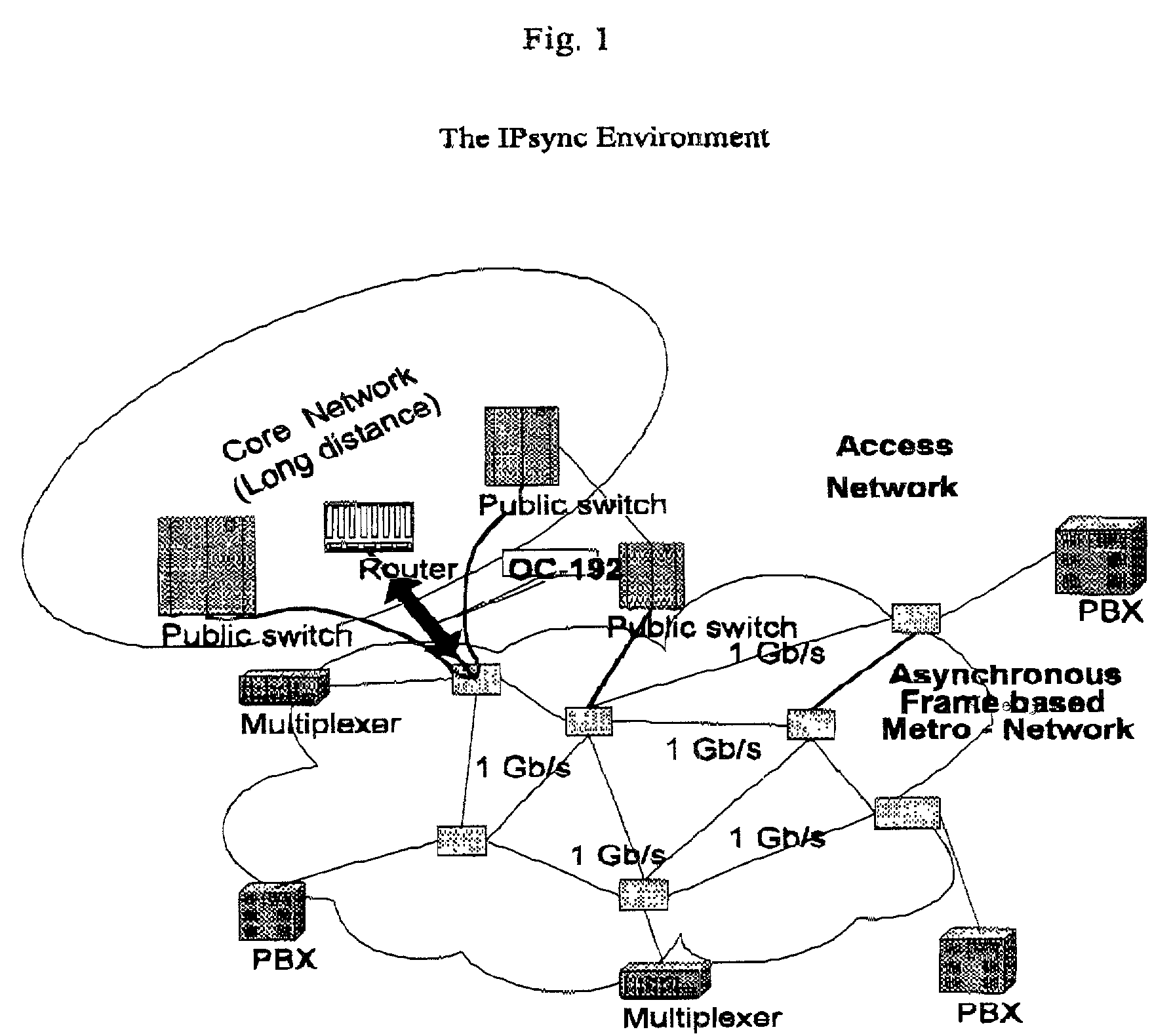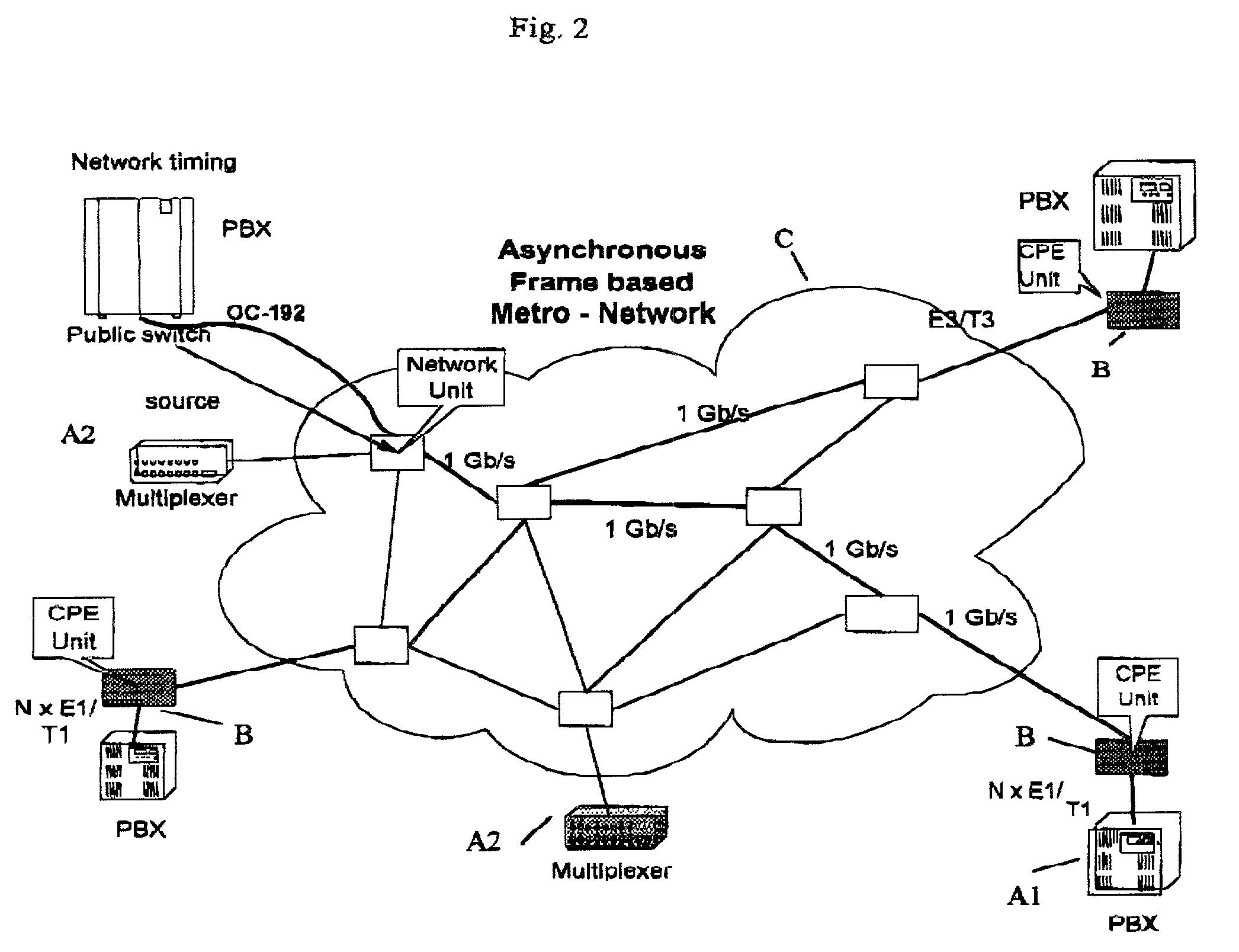System and method for synchronizing between communication terminals of asynchronous packets networks
a packet network and communication terminal technology, applied in the direction of data switching, transmission, electrical equipment, etc., can solve the problems of jitter and wander, the original voice protocol cannot meet the requirements of a data world, and the existing switch and router does not provide the performance nor the port density required to efficiently create a real-time simultaneous network with raw optical data, etc., to achieve the effect of reducing jitter and wander
- Summary
- Abstract
- Description
- Claims
- Application Information
AI Technical Summary
Benefits of technology
Problems solved by technology
Method used
Image
Examples
Embodiment Construction
[0031]The present invention provides a new methodology followed by equipment for enabling real-time synchronous data transmission in asynchronous metropolitan networks. Today, Metropolitan Area Networks (MAN) enable the transmission of asynchronous data packets between any two terminals connected to the network, The data packets transmission Is unorganized. Data packets arriving at the receiver terminal are not necessarily in the same order transmitted in. Furthermore, these packets may be subjected to time delays, which are random in length, herein referred to as “jitter”. Random time delays are necessarily inherent in networks that transmit data in data subsets. Each data packet may arrive at the receiver with a total transmission time which may vary from packet to packet. Depending upon the network path and network congestion conditions, transmission time delays may be highly different between packets.
[0032]The main concept of the present invention is to provide a new communicati...
PUM
 Login to View More
Login to View More Abstract
Description
Claims
Application Information
 Login to View More
Login to View More - R&D
- Intellectual Property
- Life Sciences
- Materials
- Tech Scout
- Unparalleled Data Quality
- Higher Quality Content
- 60% Fewer Hallucinations
Browse by: Latest US Patents, China's latest patents, Technical Efficacy Thesaurus, Application Domain, Technology Topic, Popular Technical Reports.
© 2025 PatSnap. All rights reserved.Legal|Privacy policy|Modern Slavery Act Transparency Statement|Sitemap|About US| Contact US: help@patsnap.com



